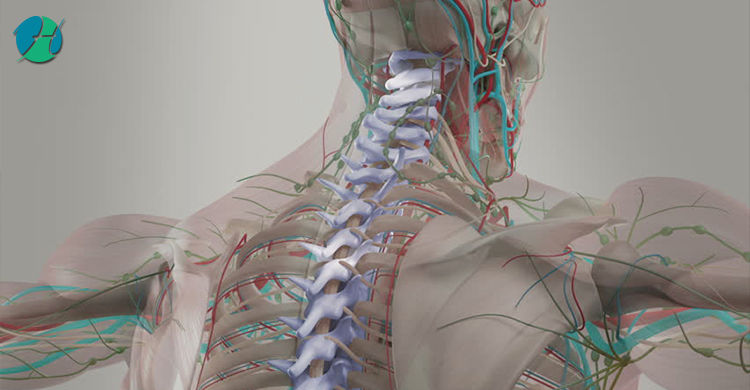Anatomy of the Spine

More than just the physical pillar of support for your body, your spine also plays a significant role in the overall health of your body. Understanding how spine health can affect a variety of systems first requires a basic understanding of spinal anatomy; learn more about its vital role so you can better work to support its health.
The Spine: More than a Support Structure
While it’s certainly true that your spine is your body’s primary support, it also houses the spinal cord. This collection of nerve fibers and tissues is responsible for relaying signals from the brain to various systems throughout the body, and vice versa. Subluxations and misalignments can interfere with the signals being sent throughout the spinal cord, potentially causing a host of problems in other areas of the body.
Each of the twenty-four vertebrae in your spine is stacked on top of one another, connected by a joint and cushioned by a disk, all of which creates a hollow column to protect the nerves and spinal cord from direct trauma and stressors, so it can properly transmit information. Over the course of a single day, this information will ensure your heart beats roughly 103,680 times, your lungs take about 23,040 breaths and blood will flow properly through almost 62,000 miles of blood vessels. When there are subluxations present in a specific area, they can have relatively predictable effects depending upon the region.
Cervical Spine (C1-C7 vertebrae):
- Headaches
- Anxiety
- Insomnia
- High blood pressure
- Migraines
- Allergies
- Earache
- Fainting spells
- Neuralgia
- Eczema
- Hearing loss
- Neck pain and stiffness
- Upper arm pain
- Bursitis
Thoracic Spine (T1-T12):
- Asthma
- Shortness of breath
- Pain in the hands and lower arms
- Certain chest and heart conditions
- Bronchitis and congestion
- Gallbladder and liver conditions
- Arthritis
- Indigestion, heartburn and other gastric difficulties
- Rheumatism
LUMBAR SPINE (L1-L5):
- Constipation or diarrhea
- Some types of rupture or hernia
- Varicose veins and leg cramps
- Reproductive and menstrual difficulties
- Sciatica and backaches
- Poor circulation in the legs and feet
- Swollen ankles
- Sacrum and Coccyx
- Spinal curvatures
- Hemorrhoids
- Pain upon sitting
Even slight misalignments and subluxations can impede the flow of all this vital information and much more, which means the health of your spine can have an effect on the health of your circulatory system, digestive system or other parts of the body.
HOW CHIROPRACTORS CARE FOR THE SPINE
A chiropractor completes four years of undergraduate study, a four-year Doctor of Chiropractic program, a one-year residency and a plethora of boards, certifications, and state licensing requirements. This extensive education means they’re able to understand the intricate connections between the spine and major physiological systems and capable of providing patients the care they need to keep information flowing freely in the absence of subluxations and misalignments.
It’s not uncommon for patients to first visit a chiropractor in order to address back or neck pain, only to find conditions they initially thought unrelated beginning to improve. By correcting spinal misalignments, chiropractors can provide relief for many patients without the need for surgery or prescription pain medication.

